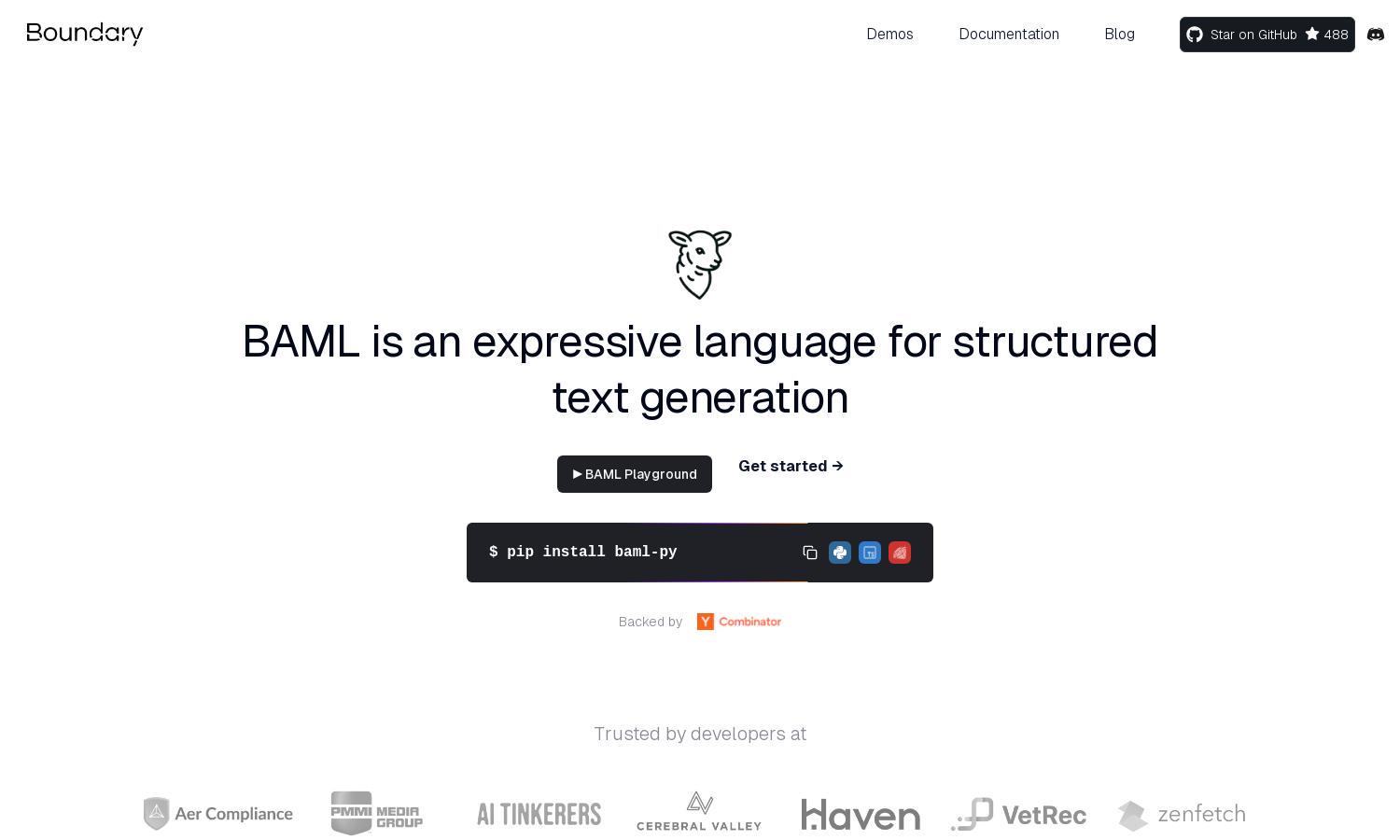Boundary

About Boundary
Boundary is an innovative platform designed for developers working with LLM applications. It uniquely provides BAML, a powerful language that simplifies structured text generation. The easy navigation and dedicated testing playground enhance user experience, empowering developers to create reliable AI-driven solutions effectively.
Boundary offers flexible pricing plans to cater to diverse needs. Users can start with a free tier that includes essential features or opt for premium plans that unlock advanced tools and support. Upgrading enhances capabilities, providing additional resources that foster improved project outcomes.
Boundary features an intuitive user interface designed for seamless interaction. Its clean layout, categorized tools, and simple navigation promote an efficient browsing experience, enabling users to focus on building with BAML. Unique features like the testing playground further enhance usability and accessibility.
How Boundary works
Users start by signing up for Boundary and gaining access to the BAML language and playground. They can easily create structured outputs by writing prompts, leveraging the platform's parsing capabilities to handle errors or formatting issues. The straightforward interface allows quick integration of various LLM applications, ensuring efficient development.
Key Features for Boundary
BAML Language
BAML is a standout feature of Boundary that transforms structured text generation. It offers developers an expressive, reliable method for creating prompts that yield accurate LLM outputs while significantly reducing the time required for development and error correction, enhancing overall productivity.
BAML Playground
The BAML Playground on Boundary allows developers to experiment and test their structured prompts in an interactive environment. It enhances the iteration speed and quality of results, making it easier for users to refine their outputs and improve their LLM application performance.
Flexible Integration
Boundary supports flexible integration with different programming languages, including Python and Typescript. This feature allows developers to seamlessly incorporate BAML into their existing workflows, maximizing efficiency and enabling a smoother transition to structured data handling with LLMs.








